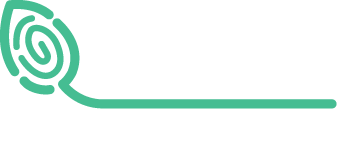
Denim Around the World – Japan
Rich in the history of indigo is the role of Japan in the denim market. It is projected that the Japanese denim market will reach $4.85B USD by 2020. Today, Japanese denim is found in premium jeans from large well known fashion houses, as well as in fabrics from the many smaller boutique brands that these days are exponentially gaining fans. Some of these brands include Edwin, Kapital, Samurai, Needles, Studio D’Artisan, The Flat Head, Chimala, The Soloist, Big John, Neighborhood, and 45RPM.
Japanese textile mills have the steep task, to provide authentic heritage, as well as innovation in order to have the reputation for its top-notch quality.
Two of the mills making high quality selvedge denim in Japan are Shinohara Textile and Kaihara. Both mills have been constructing textiles for more than a century, and now both mills incorporate TENCEL® as they develop state-of-the art textiles that perform well and are environmentally responsible.
Founded in 1893, Kaihara, is headquartered in Fukuyama City, Hiroshima with approximately 768 employees in four mills and sales offices. They offer an integrated production from spinning, dying, weaving and processing of denim.
Kaihara states, “We will continue to provide the best quality denim in the way our customers expect: with exemplary service and innovation.”
Shinohara Textile was founded in 1907 with the manufacture of scrub textiles. Based in Hiroshima-ken they have 24 air jets, 2 rapier and 8 shuttle looms to manufacture highest quality indigo fabrics.
Carved in Blue caught up with Shinohara Textile and Kaihara to get a pulse on the Japanese market today.
Carved in Blue: What are some of the strengths of Japanese denim production?
Shinohara Textile:
Its high reputation for quality and the consistency of its quality standard.
Kaihara:
We consider that Japanese consumers are the most demanding, requiring the highest quality and state-of-the-art innovation. The uniqueness and value of “Japan denim” is produced and created from this [discerning] market. Also, having a long history of indigo dyeing in Japan, more than 1500 years, there are intangible assets and knowledge behind such history — especially to achieve true INDIGO BLUE, as well as various INDIGO COLOR shades. Also, there is unique market in Japan, which requires different functions on fashion garments. Therefore, there are many opportunities for brainstorming and cooperation with fiber producers to create unique textiles like heat-generation denim, moisture management denim, lightweight denim and multi-stretch denim.
Carved in Blue: What is the current state of sourcing in Japan? How will new supply chain technologies impact your business?
Shinohara Textile:
Different weaving (playing with surface effects) , Neps by silk (2 pictures attached, 9808 is neps, 9809 is different weave construction)
We are increasingly using polyester in weft to achieve lightness, sheen, and high density (9810 is the fabric). Adopted by such luxury brands as Louis Vuitton.
Kaihara:
For the past few years, there are trends of Authentic denim, and also new generation denim, like those with various functions. There is ore variety and application in denim.
High performance functions such as “light weight,” “Dry,” “Warm,” “Super Stretch,” ‘Super Recovery” are one of the most important values required for Japanese market, and Japanese demands are the highest around the world. Therefore, much functionalal denim is developed not only in garment style, but also in fabric, yarn and fiber. These trends often influence world trends, especially in Asian countries.
Carved in Blue: What types of brands do you typically work with?
Shinohara Textile:
High end premium brands in Japan and Europe, and some in the USA that can find value out of their unique fabrics.
Kaihara:
Leading casual fashion brands, including fast-fashion brands in Japan. Local denim brands, mid- to high-end brands retailing at speciality/department stores, and USA and other premium denim brands.
Carved in Blue: In terms of business, where do you see the most potential for growth?
Shinohara Textile:
We expect the growth of the `Better Zone` meaning, “higher end,” brands, market, and we’re expecting more consumers will look for quality and quantity.
Kaihara:
Active sports brands are trying to penetrate fashion brands, and vice versa. There will be less of a border between fashion and active sports. Therefore, denim in fashion needs to have more function to adjust to this new borderless market. ie. Running in Denim, climbing in denim.
Carved in Blue: Are there any notable investments that the mill has made recently?
Shinohara Textile:
It is not new, but our machines with old selvage technology are running with full capacity. Bonding technology is also trending.
Kaihara:
Kaihara has constructed a new factory in Thailand, which started operation this year and is working well so far. We invested in it to achieve a more competitive operation and also to be closer to the customer and garment making in SE Asia) It was important to react on quicker/shorter lead time.
Carved in Blue: What are some of the new TENCEL® fabrications you’re introducing for A/W 17-18? Or what are the mill’s most popular Lenzing blends?
Shinohara Textile : For Fall/ winter, the SD fiber is preferred for use in weft to achieve dark/chic coloring. New fabric, TENCEL® in warp, SD Nylon in weft. (9811/9812 pics)
Kaihara:
Softness is one of the key trends and a – fundamental value for denim. Kaiahra will be looking for additional value to `Soft.` Adding/creating additional value with affordable price is the key.






